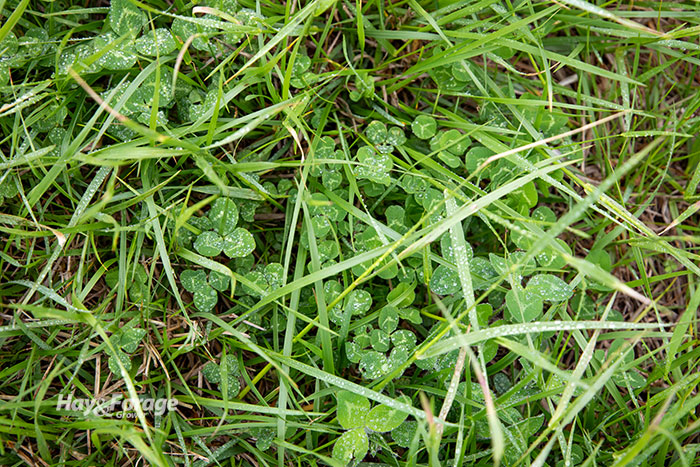
Nitrogen prices are down from their recent record-high levels. That’s good news for those who make their living with grass. Of course, nitrogen fertilizer isn’t the only means of providing this essential nutrient to grass — and it may not be the best — although grass plants really don’t care where their nitrogen comes from.
Most graziers I’ve visited through the years prefer to provide nitrogen to their pastures by means of nitrogen fixation from legumes and the ultimate dying off of root structures. The exception to this observation might be where winter cereals or ryegrasses are being grazed exclusively to fill a cool-season species gap.
The frost-seeding preference by many is not surprising. In addition to providing nitrogen, legumes help round out the protein portion of the livestock diet. That’s important for meat animals, but it’s critical for lactating animals. Legumes also add diversity to the sward and help maintain pasture production during times when grass growth lags.
Although it’s still early in January, some level of preplanning is necessary. For many Southern locations, frost seeding legumes commences in February. Nearly all frost seeding is done by early April. Regardless of location, the principles for successful frost seeding are universal.
Frost seeding is easier and quicker than conventional seeding, but it also has a higher inherent risk of failure, so attention to detail becomes more critical. There is less room for error when frost seeding.
Frost seeding is almost always done to establish red, white, or some other type of clover in pastures, though some success has been experienced with other types of legumes and ryegrass. Without question, red clover offers the easiest and most productive road to frost-seeding success.
Chris Teutsch, University of Kentucky extension forage specialist, points out that clovers can play a key role in providing nitrogen to pasture grasses and are valuable as a mitigation tool for toxic tall fescue; however, just because clovers are present, it’s still likely that livestock will be consuming a toxic dose of tall fescue during certain times of the year.
Why do frost seedings sometimes fail?
Occasionally, it’s just bad luck that comes with less than desirable environmental conditions, but most failed seeding situations come down to poor seed-to-soil contact or too much competition once the seedlings do get established.
Plan for success
Seed can’t germinate and grow if there isn’t contact with soil. That’s pretty elementary, but it’s been cause for many failed frost-seeding attempts.
In the North, paddocks designated for frost seeding need to be grazed hard in late fall, exposing more soil for the broadcast seeds to land on. Farther south, grazing to remove residue can sometimes be accomplished right before frost seeding.
Frost seeding clovers into a bunch grass species such as orchardgrass will be more successful than into a heavy sod-forming grass such as Kentucky bluegrass. In the latter’s case, soil exposure is difficult to achieve.
Although spinning seed on the field with an all-terrain vehicle (ATV) or tractor-mounted broadcast seeder is a popular means of frost seeding, some farmers prefer to use a drill, which helps ensure seed-to-soil contact.
Wayne Shriver, manager of The Ohio State University’s Eastern Agricultural Research Station, is one who prefers to frost seed with a no-till drill rather than a broadcast seeder.
“When the ground thaws, it will close over and give seeds a chance to germinate,” Shriver says. “We think the drill gets 25% to 50% better germination than broadcast seeding. Of course, the drill takes more time and is more of an investment in equipment. That’s the trade-off.”
Give seedlings a chance
Once germination occurs and seedlings emerge, they will face the daunting task of development under previously established plants. It’s like giving your running opponent a 300-yard head start.
Existing pasture species don’t wait for their new pasture mates to grow and catch up, so minimizing competition is a second important key to success. Established plants compete with the seedlings for light, nutrients, and moisture.
Teutsch recommends grazing pastures once seedlings establish. He notes that timing is critical. “You want to remove some of that fast-growing top growth to open up the stand, but you don’t want to leave cattle out there so long that they begin consuming the new seedlings,” he says.
Once the new legume seedlings reach about 6 inches tall, paddocks can be put back into the normal grazing rotation.
Making sure soil fertility and pH are at recommended levels, using quality seed from improved varieties, and seeding at an effective rate also contribute to frost-seeding success. However, none of these factors will overcome poor seed-to-soil contact and/or excessive competition after establishment.

